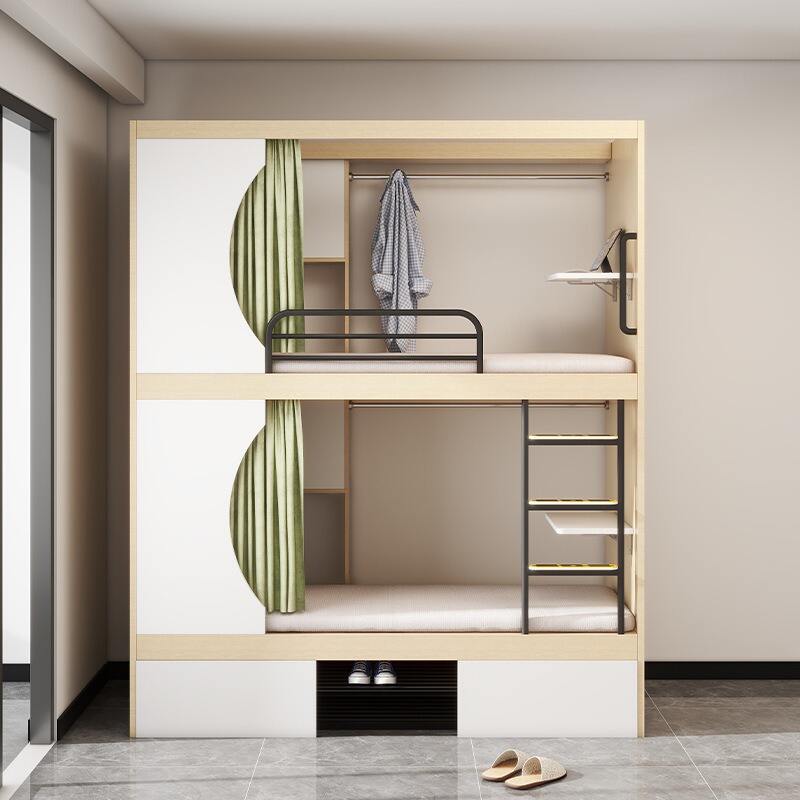Understanding Bunk Bed Materials: A Guide to Long-lasting Sleep Solutions
When choosing the perfect sleeping solution for your space, the material of your bunk bed plays a crucial role in determining both its longevity and comfort level. While various materials are available in the market, metal bunk beds have emerged as a popular choice among homeowners and institutions alike. The material selection impacts everything from the bed's structural integrity to its aesthetic appeal and maintenance requirements.
Today's market offers sophisticated designs that combine durability with style, making metal bunk bed options particularly attractive for both residential and commercial use. Understanding how different materials affect your bunk bed's performance can help you make an informed decision that serves your needs for years to come.
The Superior Properties of Metal Construction
Structural Strength and Stability
Metal bunk beds showcase exceptional structural integrity, primarily due to their robust construction and inherent material properties. The steel or aluminum frames used in these beds undergo rigorous manufacturing processes, resulting in a product that can withstand significant weight and daily use without compromising stability. The welded joints and reinforced connection points ensure that the structure remains steady, eliminating worrisome wobbles or creaks that might occur with other materials.
Modern metal bunk bed designs incorporate advanced engineering principles, utilizing strategic support points and crossbeams to distribute weight evenly. This careful attention to structural design means that users can feel secure regardless of which bunk they occupy, making these beds an excellent choice for both children and adults.
Longevity and Wear Resistance
One of the standout features of metal bunk beds is their impressive lifespan. Unlike wooden alternatives that might suffer from warping or splintering over time, metal frames maintain their structural integrity for decades when properly maintained. The powder-coated finish commonly applied to metal frames provides an additional layer of protection against scratches, chips, and general wear and tear.
These beds are particularly resistant to environmental factors such as humidity and temperature changes, which can significantly impact other materials. This resilience makes metal bunk bed frames an economical choice in the long run, as they require minimal maintenance and rarely need replacement.
Comfort Considerations in Metal Frame Design
Support Systems and Mattress Compatibility
Modern metal bunk beds feature sophisticated support systems that enhance overall comfort. The slat design and spacing are carefully calculated to provide optimal mattress support while ensuring proper air circulation. Many contemporary metal frames incorporate specialized support bars and reinforced edges that prevent mattress sagging and maintain proper spinal alignment for sleepers.
The versatility of metal frames allows them to accommodate various mattress types, from traditional innerspring to memory foam options. This adaptability ensures that users can customize their sleeping experience while maintaining the structural benefits of the metal frame.
Temperature Regulation and Airflow
Metal bunk bed frames offer superior airflow compared to solid-panel alternatives. The open design of metal slats promotes better air circulation around the mattress, helping to regulate sleeping temperature and prevent moisture buildup. This enhanced ventilation is particularly beneficial in shared sleeping spaces or warmer climates.
The material's natural heat conductivity can also contribute to a more comfortable sleeping environment, as metal frames don't retain heat like some other materials might. This property helps maintain a consistent temperature throughout the night, leading to better sleep quality.
Safety Features and Design Innovations
Integrated Safety Elements
Metal bunk bed manufacturers prioritize safety through various design features. Full-length guardrails, secure ladder attachments, and anti-slip surfaces are standard in modern designs. The inherent strength of metal allows for these safety features to be seamlessly integrated without compromising the bed's aesthetic appeal or functionality.
The precision engineering of metal frames also enables manufacturers to meet or exceed safety standards while maintaining clean lines and modern designs. Enhanced corner protections and rounded edges further contribute to the overall safety profile of these sleeping solutions.
Customization and Adaptability
Today's metal bunk bed designs offer impressive versatility in terms of configuration and customization. Many models can be separated into individual beds or adjusted to different heights, adapting to changing needs over time. The durability of metal construction ensures that these adjustments can be made repeatedly without weakening the structure.
Manufacturers are continuously innovating with modular designs that allow for additional features such as built-in desks, storage solutions, or trundle beds. These adaptable designs make metal bunk beds particularly valuable for growing families or spaces that serve multiple purposes.
Environmental Impact and Sustainability
Material Recyclability
Metal bunk beds offer significant environmental advantages due to their recyclability. Steel and aluminum frames can be fully recycled at the end of their useful life, contributing to a more sustainable furniture cycle. Many manufacturers now use partially recycled metals in their production, further reducing the environmental impact.
The long lifespan of metal frames also means fewer replacements are needed over time, resulting in reduced resource consumption and waste generation. This durability aspect makes metal bunk beds an environmentally conscious choice for eco-aware consumers.
Manufacturing Efficiency
The production of metal bunk beds typically requires less energy and generates fewer waste materials compared to other furniture manufacturing processes. Modern manufacturing techniques have optimized the use of resources, resulting in more sustainable production methods and reduced carbon footprint.
Additionally, the lightweight nature of many metal bed designs contributes to more efficient transportation and reduced shipping impacts, further enhancing their environmental credentials.
Frequently Asked Questions
What is the typical lifespan of a metal bunk bed?
A well-maintained metal bunk bed can last 15-20 years or more. The durability of metal construction, combined with proper care and quality manufacturing, ensures an extended service life that often surpasses other material options.
How much weight can a metal bunk bed safely support?
Most standard metal bunk beds are designed to support 200-250 pounds per sleeping surface, though heavy-duty models can accommodate even more. Always check the manufacturer's specific weight recommendations for your model.
Are metal bunk beds suitable for adults?
Yes, metal bunk beds are suitable for adults when designed with appropriate weight capacity and dimensions. Many manufacturers offer heavy-duty models specifically engineered for adult use, featuring reinforced frames and enhanced stability features.
How do I maintain a metal bunk bed frame?
Regular maintenance includes checking and tightening all connections, wiping down the frame with a damp cloth, and immediately addressing any signs of rust or wear. Using a mild cleaner and keeping the frame dry will help prevent corrosion and maintain its appearance.


